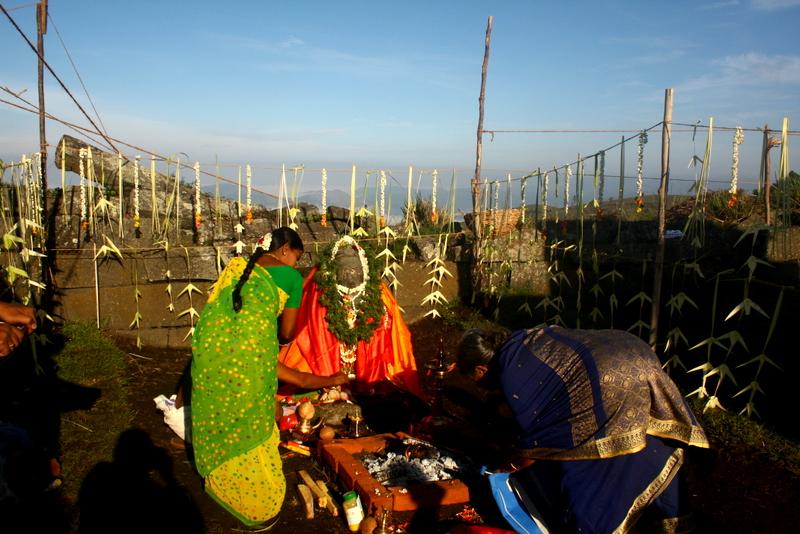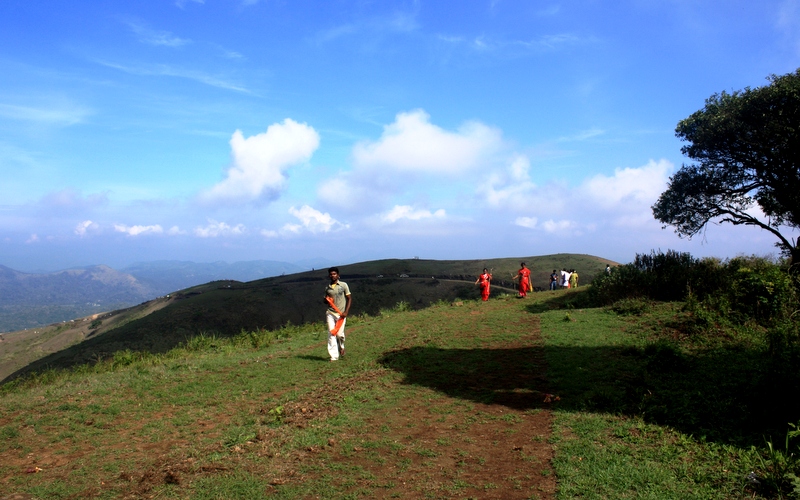29/02/2016
All she could perhaps see from the mountaintop was a distant glow in the horizon that diluted the night sky. The entire town of Madurai was gutting down steadily, in a fire, a raging fire she herself had set off by a curse. Madurai must burn, burn for all that it did to her, she took a deep breath, closed her eyes, prayed with folded hands. Soon she herself turned into fire, leaving her mortal remains for a better world where she would join hands again with her late husband.
The tale of Kannagi told by Silappathikaram, the Tamil epic written by Ilango Adikal, never fails to inspire devotees across South India, by the moral strength of woman, as displayed by Kannagi when she learned that the King of Madurai had executed her husband by mistake. Her rage didn’t abate a bit even when it consumed the lives of both the king and the queen. Kannagi cursed the entire town for colluding with the murder of Kovalan, her husband.
It is widely believed that after cursing the kingdom, Kannagi set off to the hills on her course to join her husband in heaven.
While I stand on top of Mangaladevi hill deep in the forest of Thekkady (On the border between the two states), all I could make out from the valleys far down in Tamil Nadu are matchbox-sized houses hugging close to one another at regular intervals - Cumbam and Theni. That road lined with grape yards on either side over there could be Gudallur. I peer on to see what Kannagi might have espied from here. Perhaps you need to look through the glasses of faith to pick the distant Madurai from the horizon. Would looking on for long strip the present and take me to the doomed palace Kannagi stormed into, to the secret chambers inside a myth, to the seething heart of a woman that could burn down cities after the searing memory of her dead husband! Eyes grope around for a landmark to cling on in the darkness that is hurrying in from the west. Instead of a blazing fire that once turned the horizon into a deep russet, an entire town into cinders and doused the one blazing inside a woman, all I see now are long strings of tiny electric bulbs shimmering in the gloom.
Behind me lies a jumble of rocks making the crude shape of a temple built for Kannagi by Cheran Chenguttuvan, the erstwhile king of the Chera dynasty thousands of years ago. The presence of such huge boulders (many have come off their positions) in such an impossible place in the wild and elevation (1,337 meters above sea level) is a testimony to the laborious work men undertook those days.
How fierce a motivator faith is!
But what caught my fancy as a traveler to Mangaladevi is the remoteness of the destination. Situated deep inside the Periyar Tiger Reserve, the path to the temple remains closed throughout the year save for one auspicious occasion, on the Chithrapournami day (April-May). The authorities of Kerala and Tamil Nadu jointly organize the festival every year in this controversial strip of land each of them claims.
Imagine. Between a sunup and a sundown, nearly 20,000 pilgrims from Tamil Nadu and Kerala throng around a heap of granite up a hill in the jungle. Only once in a year.
From Tamil Nadu, the temple is a steep hike from Cumbam valley. But that hardly deters anyone, you can see from the unending trickle of devotees climbing. From Kumily in Idukki district, the pilgrimage begins by haggling with the local jeep drivers over the fare, if you want a conveyance all for yourself.
I fixed it at 1,000 rupees for the 14 kilometer ride and thought it a shoddy bargain, a fleece, until I began the ride. After the initial lull, the jeep took to the forest terrain with a rude jolt with our driver almost tearing the stick out of the gear box. Shifting the game-level.
Beware! No cozy journey this is. You’d be thrown to every inch inside the vehicle, as the jeep rattles along the ghat road with sharp turns, sudden climbs and abysmal falls. Those long stretches are paved with boulders that threaten to skate along with the wheels. Still, don’t worry, you’d not be alone, as I saw an unending beeline of jeeps at the front and back dancing along as we inched forward through the jungle.
Taking my eyes off the grubby track that was raising a miasma of dust, I look at the green around. Once the curious trees that teemed on either side of the path receded, giving way to unending stretches of meadows, I could see blue mist still swirling up from the forest floor, even in this late morning, oblivious of the sudden commotion in an otherwise sleepy wood. Now the climb began.
By noon, the jeep, after pulling level with thick woolly clouds that obliterated the valleys of Kerala, left us at the base of a hillock. There was now only a short climb uphill to reach where we could see hundreds of devotees, mostly Tamil women in bright colored sarees, thronging around the temple.
A mountain breeze wafted and we shuddered in the cold as we climbed.
The temple, though in a dilapidated state, speaks mutely about a rich past through a few inscriptions on its walls. There is a strange underground passage inside the premises, they say. Many devotees believe it once ran as far as to the palace of Madurai - an umbilical cord to a distant town along which the fiery breath of a curse might have passed.
Up the sky, stars slowly brighten in an attempt to reflect the pinpricks of lights far below. Time to return.
When the ceremonies finally come to an end in the evening, and the last of the believers retires from the hill, forest officials, dozens of them, begin their humble job of combing the woods. They should not leave a scrap of plastic that could betray human presence in the wild.
And somewhere up a hill deep within, a temple petrifies, falls apart to a clutter of rocks losing its devotees.
*(Photos by Manu Remakant)*



